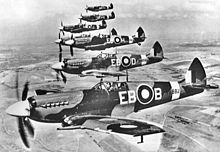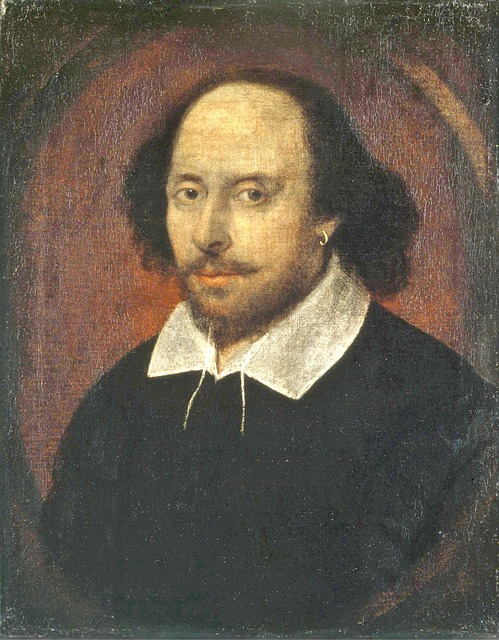History of the Battle of Britain
From Londonhua WIKI
History of the Battle of Britain
 | |
| Supermarine Spitfires |
|---|
Contents
Abstract
This milestone focused on providing the history of the Battle of Britain in a non-essay and non-history textbook way. I have always been interested in airplanes and some of my favorite such as the Supermarine Spitfire came from World War II and were used in the Battle of Britain. For this reason I wanted to research how they were used in the battle along with the key events leading up to the battle. My biggest take away was the success of the British radar system that is credited with allowing them to efficiently intercept German bombing raids.
Introduction
This milestone project is focused on the history of the Battle of Britain, the main conflict over one of the last strongholds of resistance against Hitler in Europe. I knew basic info about the Battle of Britain before this project from high school. I had also taken a History of the British Empire class at WPI. However, we glossed over World War II because it is a huge topic that many people already have the basic information on. I decided to created a Power Point presentation to tell the history of the battle and focus on the technology on both sides of the battle, the British response to the Germans, and the key events before the battle.
Background
Pre Battle Background
Hitler began his conquest of Europe by annexing Austria into Germany. After Czechoslovakia quickly surrendered it too was added to Germany’s growing empire. WWII truly began after Hitler invaded Poland bringing Poland’s allies Britain and France into the War against Germany. The invasions continued and soon Hitler had taken Denmark and Norway. With most of the European resistance now under Hitler’s control, his focus turned to Britain his last remaining threat. In order to conquer Britain troops would first have to be moved across the English Channel this was known as Operation Sea Lion. Hitler believed that he needed air control over the English channel to successfully transport soldiers. The desire for air superiority lead to the bombing raids over England.
New Technology
After experiencing the bombing of WWI, in 1935 England started to look for a solution to prepare it self for the seemly inevitable bombing raids in WWII. After 3 years of work the British were able to create a 30 MHz radar system. Using this radar the British created the dowding system, a series of radar towers and airfields organized to quickly deploy fighters in response to a bombing raid. After German forces had been detected by the radar the message was relayed to command centers until the closest airfield sent out fighters to intercept the bombers. This system was named after its creator Air Chief Marshal Hugh Dowding.
Prior Bombings of England
In WWI Germany was in the same situation hitler was facing. In order to weaken the British the Germans used the newly developed Zeppelin airships to fly across the Channel and bomb Britain. Although not very effective because the Zeppelin’s were in accurate the bombings caused a lot of panic. The british responded to limit the Zeppelin’s damage and dimmed the city streets to hurt the zeppelin visibility. However, the key to was to be able to reliably take out the Zeppelins instead of just limiting them. Eventually incendiary bullets were developed for airplane fighters allowing them to take out the Zeppelins with ease.
With the Zeppelin threat almost eliminated the Germans switched from the sitting duck Zeppelins to the bi-plane Gotha Bombers. These bombers were much more successful. Attacking the Gotha Bombers required the creation of communication between fighter planes and new combat maneuvers. In a year over 60 Gotha bombers were destroyed proving the success of the new british tactics.
Aircraft in the Battle of Britain
Boulton Paul Defiant
· 1030 hp Rolls-Royce twelve cylinder liquid-cooled engine · 39ft wide · 35ft 4 inch long · Max speed 304 mph · Armament 4 .303in Browning machine guns in turret · Pilot and air gunner · Production fell behind leading up to the war · Turret interceptor plane · Forced into action besides Spitfire and Hurricane
Bristol Beaufighter
· Pilot gunner and radar operator · 2 1400 hp Bristol Hercules xi fourteen cylinder air-cooled engines · 57ft 10 inch wide · 41ft 4 inch length · max speed 321 mph · four 20mm hispano cannon in the nose and six .303in browning machine guns in wings · night fighter and torpedo bomber
Bristol Blenheim
· two 840 hp Bristol Mercury VIII nine-cylinder air-cooled engines. · 56ft 4 in wide · 39ft 9 in length · max speed 285 mph · 4 .303in browning machine guns mounted 1 .303 in machine gun in turret. · Failed as a day fighter used as a night fighter instead.
Hawker Hurricane
· 1030 hp Rolls-Royce Merlin III twelve cylinder liquid-cooled engine · span 40ft · length 31ft 4 in · max speed 328 mph · eight .303 in browning machine guns mounted in wings · pilot only · fighter in battle of Britain · 1715 flew in the period of the battle
Super marine Spitfire
· 1,1030 hp Rolls-Royce merlin III twelve-cylinder liquid-cooled engine · Span 36ft 11 inch · Length 29ft 11 in · Max Speed 362 mph · Eight .303 in Browning machine guns mounted in wings · Pilot · Main airplane used in the battle of Britain
Dornier Do17
· Two 1,000 hp Bramo 322P nine-cylinder air-cooled engines · Span 59ft ¾ inch · Length 52ft · Max Speed 265 mph · Between 4 and 8 7.9 mm machine guns in front, rear and beam cockpit mountings and ventral position · Bomb load of 2,200 lb · Pilot and 4 gunners navigators and bomb aimers · Bomber used by the Germans in the battle of Britain
Heinkel He 111
· Two 1,100 Daimler-Benz DB601A-1 twelve-cylinder liquid-cooled engines · Span 74ft 1 ¾ in · Length 53ft 9 ½ in · Max Speed 247 mph · Three 7.9 mm machine guns in nose dorsal and ventral positions · Pilot two gunners navigators bomb aimers · Bomb load 4,410lb · Started off being designed as a mail and people carrier
Flight Tactics for Germany
The German bombers flew in a formation toward the target. While there was no threat to the bombers, German fighters flew above the bombers ready to engage any opposing British fighters. The German Messerschmitt performed better at higher altitudes than the British planes giving them the advantage if the British were at that altitude. However most of the advantage came from the sun blinding opposing fighters and having gravity on their side when it came time to engage.
Flight Tactics for Britain
In the beginning of the war the British prided themselves on having excellent formation flying skills and developed formations to maintain in combat. However, the use of the formation limited the maneuverability of the whole fighter squadron and as a result the squadrons effectiveness. Eventually the British changed their formations to allow the fighters to adapt in the fight becoming more fluid.
Deliverable
Battle_of_Britain.pdf
Use Subsections Headings
Organize each section of this article so that it has a logical flow. If you intend to discuss one aspect of the origin of a person, place, thing, or idea, identify the appropriate existing section of the article, or create that section if it doesn't exist. Then, make a clear subheading. If you notice that some other information is not organized clearly, rearrange the information, but do so cautiously and responsibly! The goal here is clarity for the reader.
Add links to other articles, but do not link to personal student profile pages or milestone pages. Add media as needed in the appropriate sections.
References
If appropriate, add a references section
External Links
If appropriate, add an external links section
Image Gallery
If appropriate, add an image gallery
Category tags
Don't forget to add category tags!!! Your Article Pages MUST contain one or more Category tags like this:
[[Category:Art]]
[[Category:Music]]
[[Category:Philosophy & Religion]]
[[Category:Drama & Theater]]
[[Category:Writing & Rhetoric]]
[[Category:History]]
[[Category:English]]
...and NO OTHER TAGS especially "project" tags.
See the Category Help page for assistance. Don't include irrelevant category tags in your article pages (like the Template category!)
Delete this entire "Category section" when editing this page--Categories don't need a heading.
